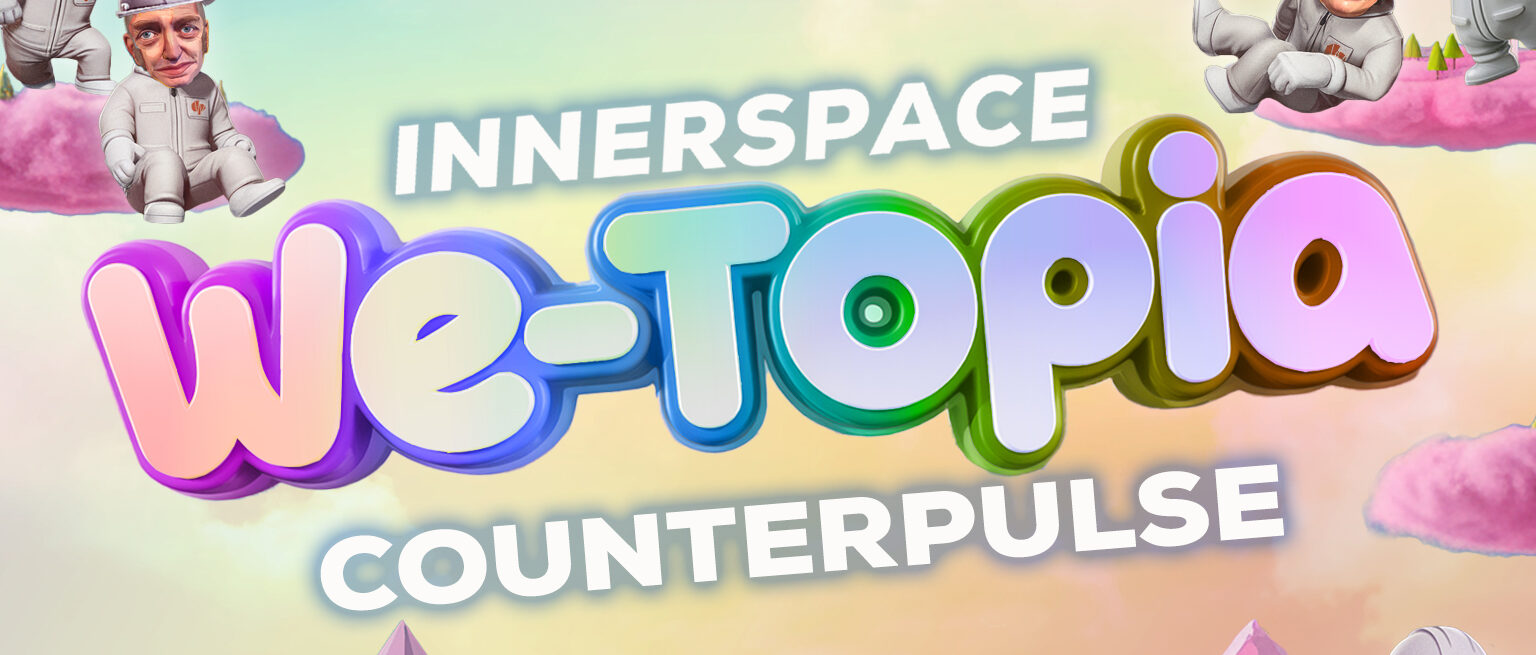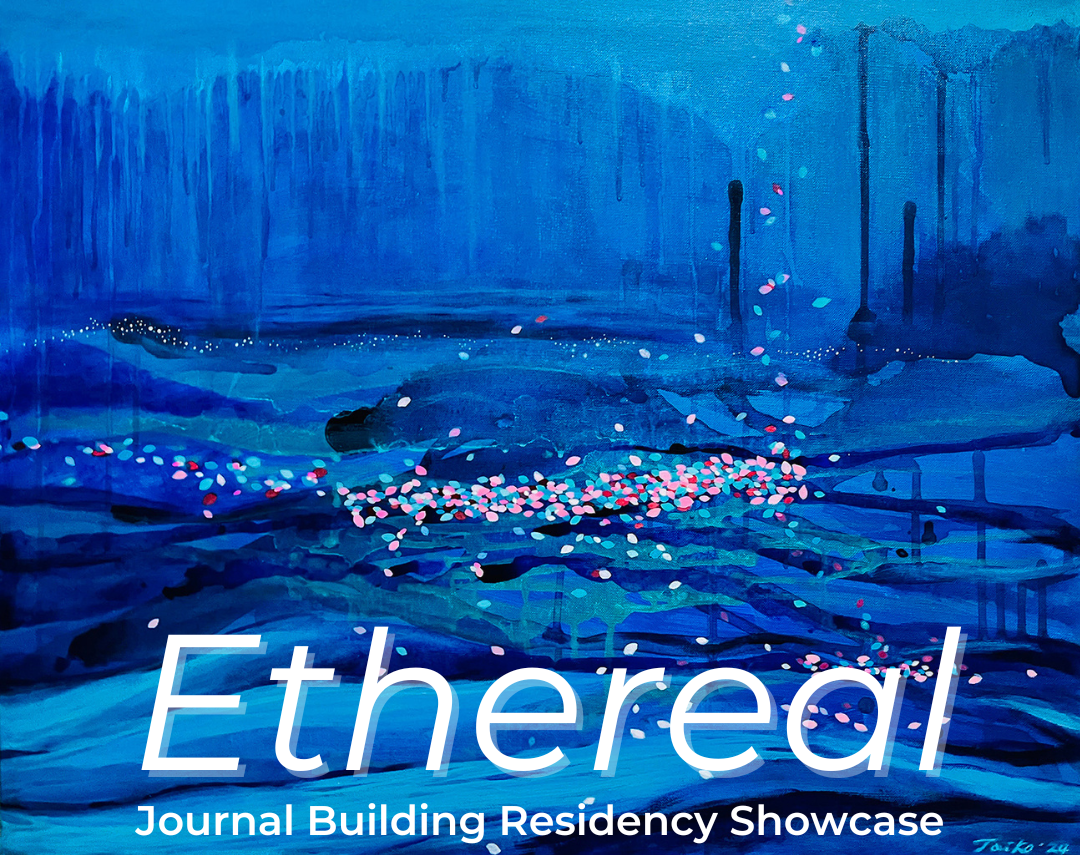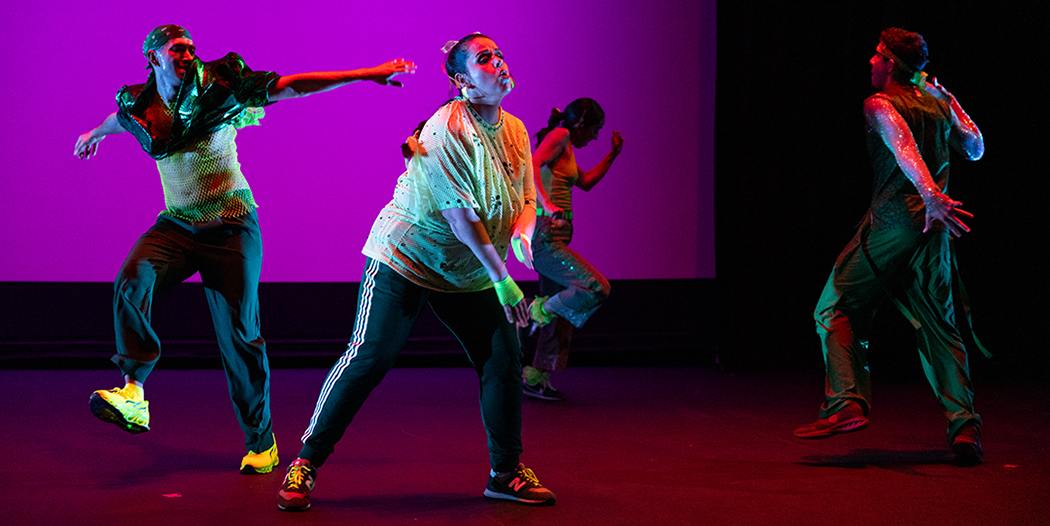As technology complexifies with increasing vigor, it’s easy to overlook perhaps the most complex (and intimate) technological system: the human body. At the intersection of dance and creative technology, projectors illuminate dancers; beneath the canvas/dermis exists a intricate network of blood vessels channeling through bones that protect our organs that keep us alive. The projector and body respond to one another in an infinite debate of free will versus determinism. Chicken or egg. Does artificial technology dictate our organic movement? Or does the projector follow?
Our bodies are a highly responsive form of machinery. On stage, we respond to visual cues—the flashing PAR cans dilating your pupils to absorb more light, we respond to sensual stimuli—the flight-or-fight reflexes of being stagefright. We respond to illness, within ourselves and from a loved one, with emotional reflex, push and pull, fulcrums breaking upon diagnosis. Sometimes technology isn’t so easy to understand.
Choreographer Daiane Lopes da Silva and data scientist Weidong Yang lead Kinetech Arts, a San Francisco-based art + tech organization. Their new work, MESH (as part of the CounterPulse Combustible Residency), juxtaposes data visualization mapping with its embodied realization: performance.
From Yang’s perspective, the process of creating work in art and technology is highly similar, both needing strong intuition, versatile engineering skills, and embracing the unexpected. “The difference is that,” says Yang, “while the success of an artwork is often subjective, the success of a scientific rehearsal is very objective.” Working as a data scientist, Wang’s past research yielded meaningful discoveries from unexpected places, influencing him to take a more experimental approach in bringing art and together together. MESH actualizes this free exploration into the hybridity of technology and uninhibited performance.
Yang, a student of Taiji, or “the oneness before the duality of Ying and Yang originate,” recognizes the subtle manifestation of duality in Kinetech Art’s work. “We like to address things in transition, concerning what lead to it and where it will go.”
The juxtaposition of technology with performance does not merely complement the dance vocabulary; but rather, “helps contain the wildness of humanity and create focus and balance with design elements,” explains Daiane Lopes da Silva.
Growing up in Brazil, where dance is often rooted in spiritual catharsis as well as community engagement, da Silva was met with initial friction against Western notions of logic in performance, art, and life. “Rhythm is felt from the inside out and it connects the people by building the energy in the body and expanding it into the space,” da Silva examines. “We rarely count the music or rationalize it. We experience the energetic level of music as well the energy in people and in between people, and that’s how we move in dance and in life.”
While performing in Europe, da Silva had to galvanize her analytic side “with the precision of a sharp knife,” challenging her to balance visceral, raw performance with the logic of technology. “Often, dancers feel that working with technology takes you away from your body,” she observes. “That can be true, but it doesn’t need to be that way. Technology does not stop us from moving. Technology opens new possibilities for performance and it can be informative and inspiring.”
Together, Yang and da Silva’s artistic processes equilibrates their work like a tug-of-war where both artists are releasing the rope as much as they are pulling it. While da Silva requires focus and silence, absorbing information before delving into the creative process, Yang prefers chaos. “His brain likes to engage in multiple threads. I am the opposite…To me, creating is like dreaming. Distractions inspire Wei. He cannot find things in the fridge. He is weird,” quips da Silva. Yet the artists’ disparate approaches complement each other well, as they’ve learned the intuitive nature of artistic partnership.
Working with experimental artist and designer Jiayi Young and Shih-Wen Young, Kinetech Art’s work interrogates the notion of the human as a working and malfunctioning technology. Young, the project’s Art Director, synthesizes da Silva and Yang’s conceptual framework with emotional depth and impact “while ensuring the piece offers a coherent narrative from both the temporal and spatial perspective,” she explains.
The technical components in this work are plentiful without feeling inharmonious. MESH imposes data visualization into data physicalization through the use of live digital painting on skin, haunting shadow play, computer simulation, and entrapping fabrics in flux with jarring performances by dancers Maria Sotnikova, Daiane Lopes da Silva and Hien Huynh. The work is a synesthetic overture of health and love.
The projections in MESH serves as a Rorschach test into broader issues. Themes include a failing healthcare system and the effect of disease between loved ones. The dancers and artists capture the obfuscation of things that should be simple between two people, the voyeuristic eye of medical observation, the frustration of running in place. A highly sophisticated piece of technology can be alienating when your machine can’t be repaired.
“What sparkled us to make this piece is the fact that we had and have close friends going through cancer treatment,” da Silva offers. “We witnessed their struggle, vulnerability and strength and that inspired us.” The artists’ vicarious intimacy with cancer inspired rumination on mortality, the appreciation of our organic technology, and “the immense capability of humans to find inner strength in times of hardship.”
Ergo MESH underscores the salience of health care reform by illustrating the vulnerability of our technological components when repair is inaccessible. “These experiences lead us to reflect on the importance of affordable health care, human condition, the need for a reliable social network,” explains da Silva. “This is a real concern for all of us. We have been stuck in the same story for decades.”
MESH premiers at CounterPulse Sept 7-9, 14-16, Thursday-Friday, 8pm as part of a double bill performance from the Combustible Residency.
Thank you to Daiane Lopes da Silva, Weidong Yang, and Jiayi Young for their responses. Learn more about Kinetech Arts here.
Justin Ebrahemi is the Outreach Manager at CounterPulse.
[All photos by Weidong Yang]
Share This!
More Good Stuff
Thursday March 6th • 5PM - 10PM Step into a world where imagination shapes reality at CounterPulse’s annual gala! This year, INNERSPACE: We-Topia is
Ethereal: Market Street Studios Meet Tenderloin Stage San Francisco, CA — ArtSpan and CounterPulse are proud to present "Ethereal," a transformative group exhibition featuring works
Primera Generación Dance Collective is ready to be back in San Francisco! We are so excited to perform and be in community with our







Wow! The idea/project sounds intriguing. I hope to see a performance.